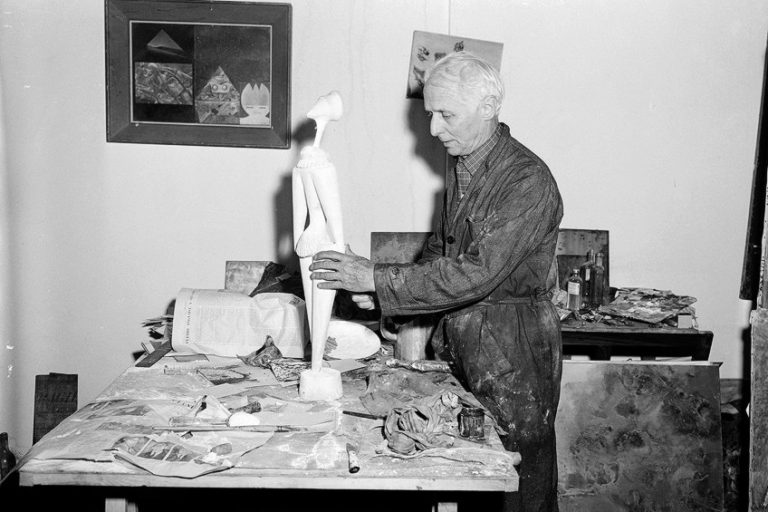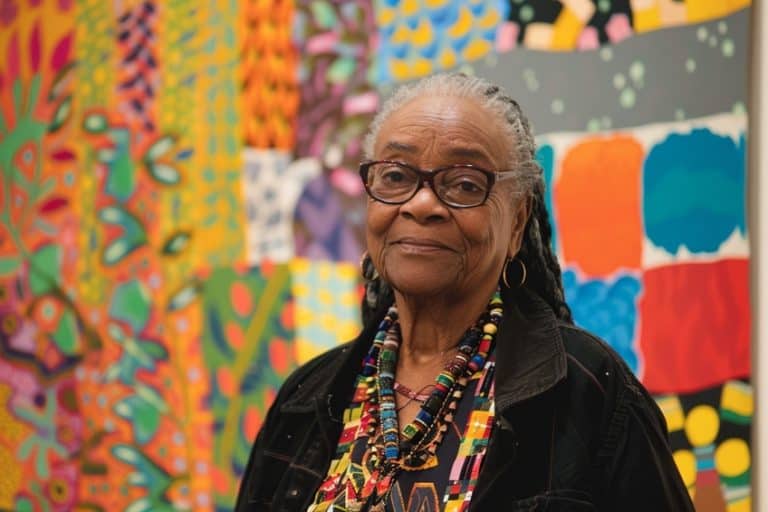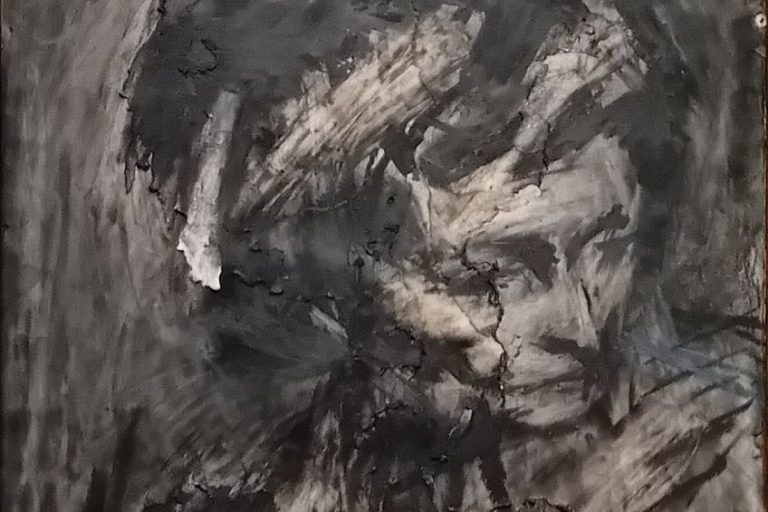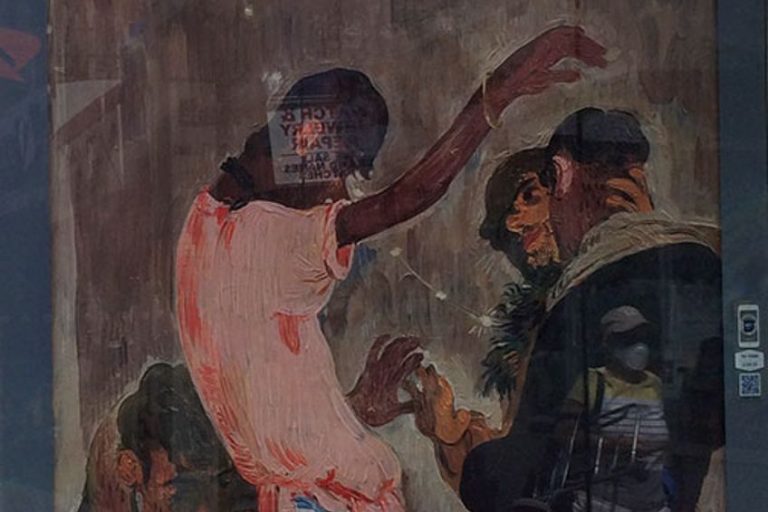Milton Avery – The Artist With a Palette of Emotions
Milton Avery, a prominent American painter of the 20th century, is celebrated for his unique approach to color and form. Born in 1885, Avery’s artistic journey encompassed various styles, including realism and abstraction, yet he is best known for his simplified and expressive compositions that capture the essence of his subjects. His use of bold colors and flattened shapes created a distinctive visual language that resonated with viewers and fellow artists alike, making him a significant figure in the development of modern American art.
Key Takeaways
- Milton Avery was a significant figure in American modern painting, celebrated for his unique approach to color and abstract representation.
- Through his dedication and self-instruction, Avery influenced later abstract expressionists, despite remaining aloof from prevalent artistic trends.
- Avery’s personal and family life was closely linked to his art, collaborating with his wife, the artist Sally Michel Avery, and nurturing their daughter, artist March Avery.
Early Life and Education
| Birth | March 7, 1885 |
| Death | January 3, 1965 |
| Place of Birth | Altmar, New York, United States |
| Genre of Work | Painting |
Milton Avery stands as a defining figure in American modern painting, known for his contribution to the mid-20th-century art movement. Born in 1885 in Altmar, New York, Avery’s journey to becoming an eminent painter began after his move to Connecticut and subsequently to New York City. Despite being largely self-taught, his work exhibits a masterful control of color and form, distinguishing his abstract and representational paintings that illustrate both landscapes and still lifes with a distinct Avery flair.

During his career, Avery maintained a singular path through American Modernism, sidestepping the dominant trends of his time to develop a personal style that resonated with individuality and innovation. His influence spread to notable abstract expressionists who drew from his technique of balancing simplicity with complexity in color and design.
His marriage to fellow artist Sally Michel Avery and their family life, including their daughter, artist March Avery, formed a personal world that intertwined deeply with his artistic endeavors.
Art Students League of New York
Avery attended the Art Students League of New York, where he furthered his studies in painting. The institution, known for its broad influence on American art, provided him with an environment to refine his skills and interact with other artists.
School of the Art Society of Hartford
Before his time at the Art Students League, Avery enrolled in the School of the Art Society of Hartford after moving to Connecticut, indicative of his dedication to artistic development despite his late start.

Mature Career
As he moved into his mature career, Avery’s style evolved, becoming more distinctive. His work during this period began demonstrating a shift toward abstraction, which would come to define his contribution to American modern art.
Late Career and Death
In his late career, Avery’s reputation solidified, and he continued to paint until his death on January 3, 1965, in New York City. Avery left behind a legacy as a significant American modernist painter whose influence extended well beyond his lifetime.

Artistic Style and Influence
Milton Avery is known for his role in the transition from representational art to abstract painting in America. His signature style, characterized by flattened planes and a sophisticated use of color, influenced the next generation of artists pursuing American Abstract Painting.
American Abstract Painting
Avery was a key figure in the development of American abstract painting, a movement that sought to emphasize the visual and emotional impact of color and form over representational accuracy. His simplified forms and focus on the arrangement of colors on the canvas provided a roadmap for artists like Mark Rothko, Adolph Gottlieb, and Barnett Newman, who further explored abstraction and were significant figures in the later Abstract Expressionism movement.

Color Relations
Central to Avery’s artistic style was his nuanced approach to color. He carefully balanced hues and tones to evoke moods and harmonies on the canvas, an approach significantly aligned with modernist color theories. Color in Avery’s work was not used to describe the reality of the subject but to express an inner world, creating a sense of place or feeling through juxtapositions and interactions of color.
Influence of Matisse and Fauvism
The influence of Henri Matisse and Fauvism is evident in Avery’s work. Like Matisse, Avery utilized bold, expressive color and emphasized compositional elements over the literal subject matter. His paintings often reflect a Fauvist-inspired palette with vibrant and unexpected color combinations. Avery’s distinct visual language helped shape a uniquely American interpretation of modernism, demonstrating how European movements like Fauvism could be adapted and transformed in a different cultural context.

Notable Works and Exhibitions
Milton Avery’s artistic achievements are underlined by his influential exhibitions and his works residing in renowned institutions. His paintings reflect a transition from American Impressionism to Abstract Expressionism, demonstrating a unique blend of simplified forms and personal expression.
Whitney Museum of American Art
The Whitney Museum of American Art, which often focuses on contemporary American art, has featured Avery’s works. Commonly known for his vibrant color palettes and serene representations, Avery’s pieces at the Whitney showcase his influence on American art. A notable work found at the Whitney is Pink Field, which exemplifies his use of color fields and minimalistic landscapes.

Phillips Collection
The Phillips Collection, a museum aiming to combine modern art with classic masterpieces, has embraced Avery’s evocative landscapes. This includes the eminent painting, Gaspé Landscape. At this institution, Avery’s work is presented in a way that underscores his importance in the bridge between major American art movements, with a special emphasis on his balance of form and hues.
Personal Life and Legacy
Milton Avery’s journey through his personal life deeply intertwined with his profession as an artist, with impactful relationships that influenced his work. Central to his personal narrative was his marriage to Sally Michel, his connection to influential circles in New York City, and the profound legacy he left in the art world.
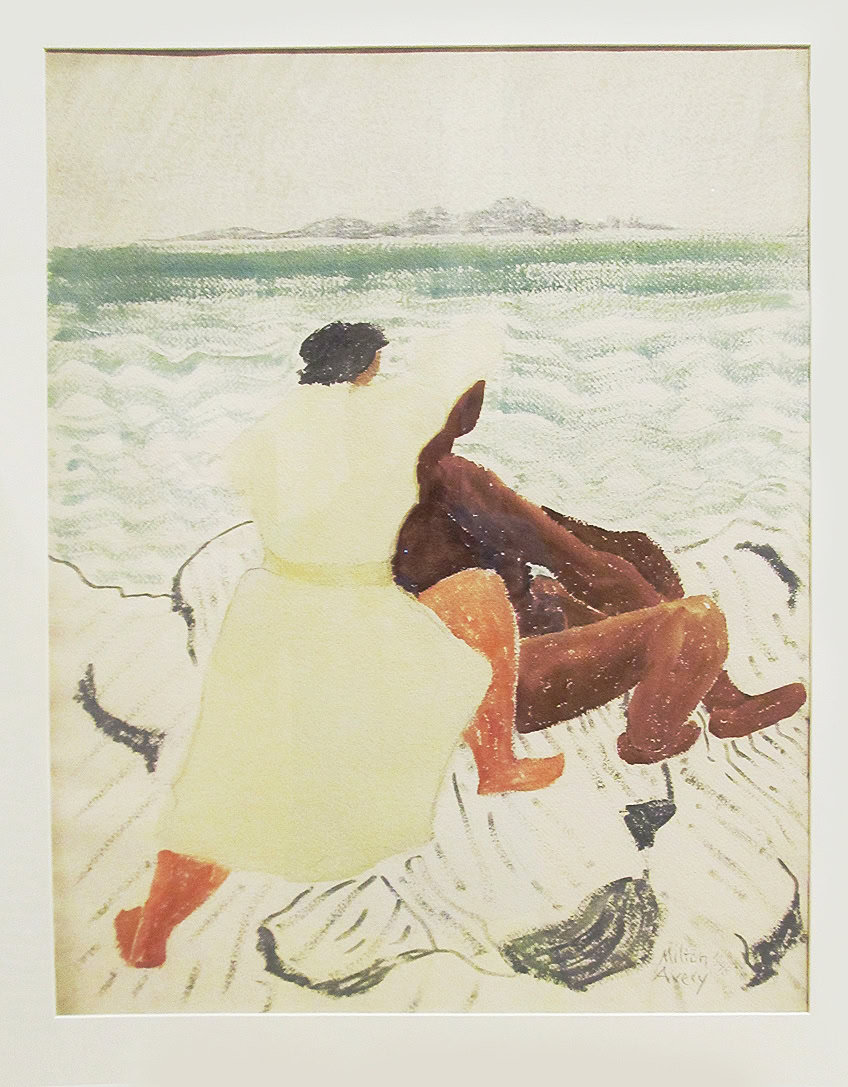
Marriage to Sally Michel
Milton Avery married Sally Michel, a notable artist and illustrator. Their partnership was both romantic and professional; with Michel often contributing financially through her work in the early years. They had a daughter, March Avery, who also became an artist.
Their shared passion for art made them prominent figures in the artistic community of New York City.
Influence on Later Artists
Avery’s work had a significant influence on later generations of artists. His use of color and form inspired many abstract expressionists, including renowned artists like Mark Rothko. Avery’s artistic friendships included influential collectors and patrons such as Roy Neuberger who championed his work.
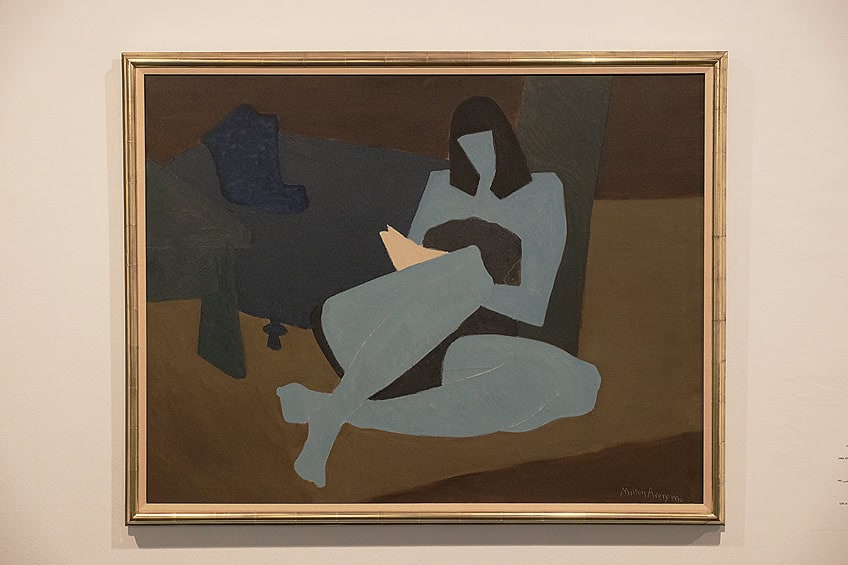
Archives of American Art
The Smithsonian Institution’s Archives of American Art holds a significant collection of Milton Avery’s materials. This includes correspondences, sketches, and photographs that document his life and work. The archive provides a comprehensive view of Avery’s contributions to modern American art.
Legacy of Milton Avery Today
Milton Avery passed away from a heart attack in 1965 and was laid to rest in the Artist’s Cemetery in Woodstock, New York. His legacy continues to be celebrated by art historians and curators, with figures like Barbara Haskell facilitating retrospectives of his work. Avery’s influence in modern art endures, making his pieces sought after by galleries and collectors worldwide.
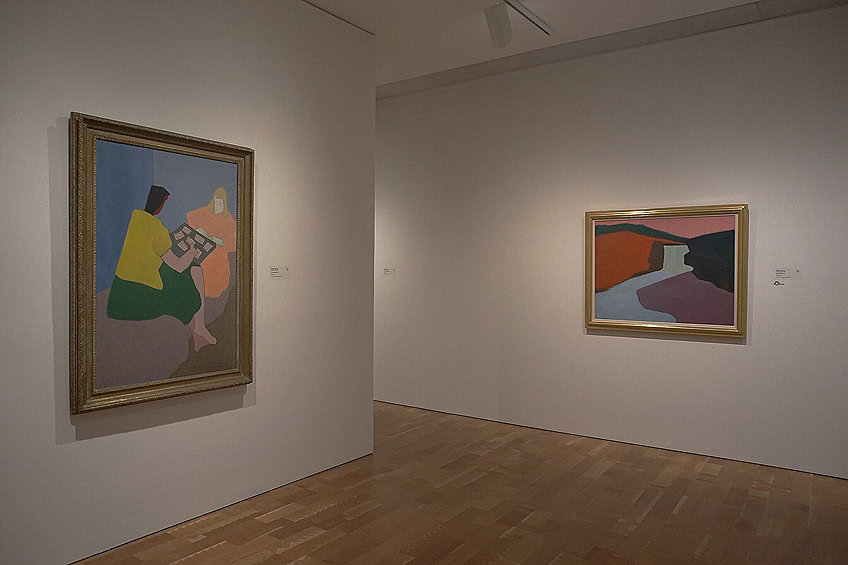
Milton Avery’s enduring legacy in the art world stems from his ability to infuse simplicity with profound emotion, creating timeless works that continue to captivate audiences. His mastery of color, form, and expression not only influenced his contemporaries but also paved the way for future generations of artists. Through his art, Avery forged a unique path that bridged the gap between realism and abstraction, leaving behind a rich body of work that remains a testament to his artistic vision and innovation.
Frequently Asked Questions
What Distinguishes the Painting Style of Milton Avery from Other Artists of His Time?
Milton Avery’s painting style is notable for its simplified forms and bold color palettes. He employed color as the primary means of expression, often reducing detail and steering away from realistic depictions, which set him apart from many of his contemporaries.
Which Museums Feature Significant Collections of Milton Avery’s Artworks?
Significant collections of Milton Avery’s artworks can be found at The Phillips Collection in Washington, D.C., which was the first museum to acquire his work. Additionally, his artworks are part of the collections at the Smithsonian American Art Museum and MoMA (The Museum of Modern Art).
How Have Milton Avery’s Paintings Influenced Subsequent Generations of Artists?
Milton Avery’s influence is evident in the work of subsequent generations, particularly in the way he used color and abstraction. His paintings served as a bridge between representational art and abstract expressionism, influencing artists who sought to balance these two approaches.
What Are the Characteristics of Milton Avery’s Landscape Paintings?
Avery’s landscape paintings are characterized by their reductive style, transforming complex scenes into interplays of color and shape. These landscapes eschew detailed representation in favor of evoking the essence and mood of a place through harmonious color fields.
Isabella studied at the University of Cape Town in South Africa and graduated with a Bachelor of Arts majoring in English Literature & Language and Psychology. Throughout her undergraduate years, she took Art History as an additional subject and absolutely loved it. Building on from her art history knowledge that began in high school, art has always been a particular area of fascination for her. From learning about artworks previously unknown to her, or sharpening her existing understanding of specific works, the ability to continue learning within this interesting sphere excites her greatly.
Her focal points of interest in art history encompass profiling specific artists and art movements, as it is these areas where she is able to really dig deep into the rich narrative of the art world. Additionally, she particularly enjoys exploring the different artistic styles of the 20th century, as well as the important impact that female artists have had on the development of art history.
Learn more about Isabella Meyer and the Art in Context Team.
Cite this Article
Isabella, Meyer, “Milton Avery – The Artist With a Palette of Emotions.” Art in Context. May 14, 2024. URL: https://artincontext.org/milton-avery/
Meyer, I. (2024, 14 May). Milton Avery – The Artist With a Palette of Emotions. Art in Context. https://artincontext.org/milton-avery/
Meyer, Isabella. “Milton Avery – The Artist With a Palette of Emotions.” Art in Context, May 14, 2024. https://artincontext.org/milton-avery/.




